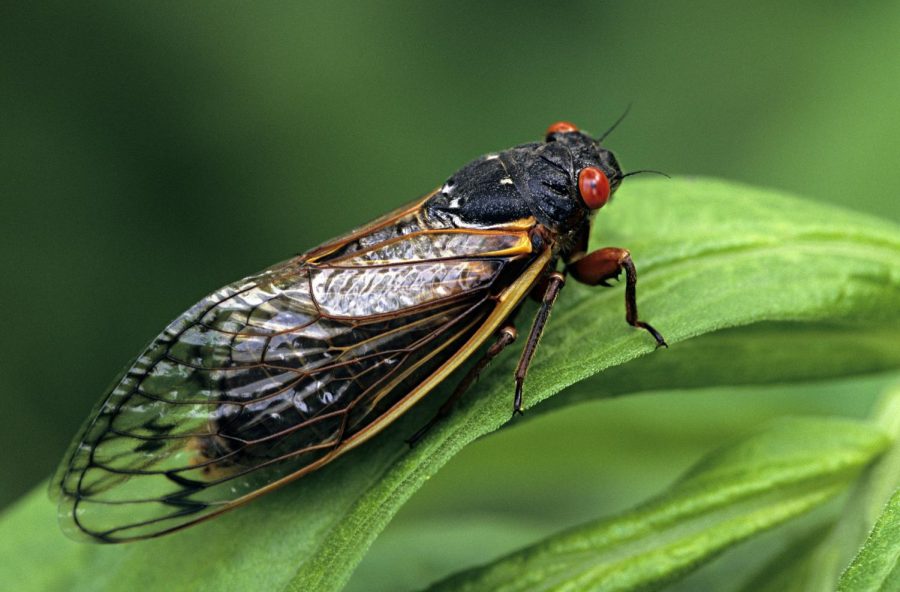The Invasion of Brood X
June 20, 2021
They’re here! Between the late spring and the early summer of this year, an invasion will occur. An invasion of the infamous 17-year cicadas known as Brood X, which is the largest of the 12 cicada groups, will be emerging. Only in the northeastern region of the United States can these ground-dwelling insects be seen once every 17 years, which marks this year, 2021. The last time the cicadas emerged from their home deep in the earth was in 2004, and they are here once again to rise to the surface and begin their mating ritual after years of feeding on the juices of underground plants and roots.
What is particularly remarkable about this species is the piercing cacophony of male cicadas as they signal for a female’s attention, a sound that can reach 100 decibels. This brings up the discussion of how the emergence of cicadas will impact residents. Many people may find their mating song as a nuisance. Farmers may even be concerned about their crops and whether cicadas will impact their harvest, and homeowners with plants or gardens might also be concerned about the cicadas’ presence. Cicadas have been mistaken multiple times as pests. Although there may be complaints regarding noise, farmers and gardeners can rest assured that cicadas pose no threat to plants and don’t feed on crops. Cicadas have been emerging regularly for many centuries and have been around for over 4 million years. They can even be positive for the environment. In fact, cicadas are a great source of food for animals including birds, squirrels, and frogs, not to mention how they stimulate tree growth. After the cicadas have finished mating, the female lays the eggs on tree branches, and then both the females and males die. Many cultures like to take advantage of this and enjoy a crunchy snack made with the cicadas, as people have done for many years. Cicadas that have died can also be used as natural compost when microbes in the soil absorb nutrients from the decaying bodies, which can help farms and gardens thrive further.
In addition to tasty recipes and composting ideas, the emergence of the cicadas may incite further curiosity: How do the insects know to come out specifically after 17 years? It’s important to know that cicadas live alone, each in its own underground chamber about a foot beneath the ground’s surface. This means that the cicadas don’t signal each other when it’s time to come out. So, how do they know? They are instead signaled by the soil’s temperature, which has to reach 64° and this happens to be around the time of March to May in the northeastern part of the United States. When they detect the appropriate temperature, the cicadas begin digging upward.
For those residents who are not particularly excited about this event, they can also rest easy knowing that the cicadas will only be around for a few weeks. People will only see them for a short time, but cicadas have some of the longest life expectancies of all species in the insect world. Fortunately, the short time that cicadas spend with us may be even shorter. As things like housing development, building construction, and other man-made intrusions obstruct the natural environment, it decreases our chances of seeing cicadas in the future and saving this rare phenomenon for future generations. After all, the cicadas only come nearly once every two decades. Although the cicada season this year is nearly over, we can look forward to their next appearance to once again admire the unique process of the female cicadas laying their eggs, the eggs hatching into newborn cicadas, and again burrowing deep into the ground to start the cycle again in another 17 years.











